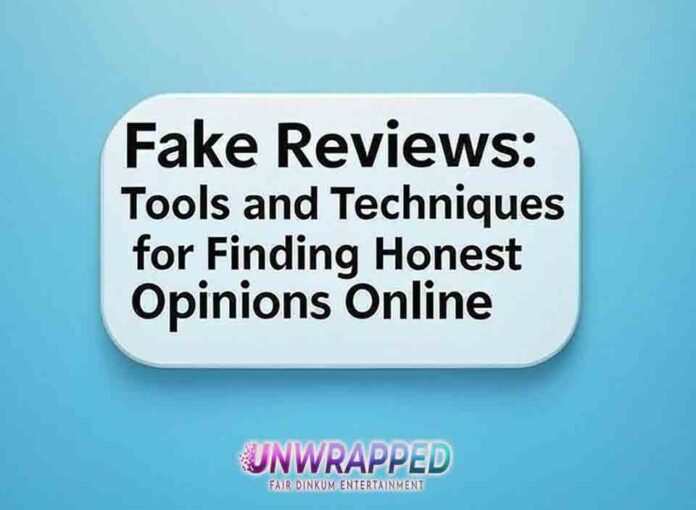Online reviews shape modern consumer behavior more than any other factor. From booking hotels and restaurants to buying gadgets or skincare products, reviews can make or break a decision. However, with the rise of e-commerce and social platforms, fake reviews have also exploded. These misleading comments, often written by bots or paid writers, create a distorted picture that costs consumers both money and trust.
The good news is that spotting fake reviews is possible with the right strategies and digital tools. Learning to separate genuine feedback from fabricated content helps shoppers make informed decisions while encouraging businesses to uphold transparency. This article explores practical techniques, advanced tools, and expert-backed strategies for finding honest opinions online and avoiding the traps of review manipulation.
The Rise of Fake Reviews
The scale of fake reviews is staggering. According to a report from the World Economic Forum, more than 4% of online reviews are estimated to be fraudulent, equating to billions of deceptive posts each year. Amazon alone has had to remove millions of reviews after investigations uncovered fake review networks. These falsified opinions don’t just mislead consumers—they also unfairly reward dishonest sellers while punishing honest businesses.
The rise of fake reviews is fueled by:
The competitive e-commerce landscape, where sellers try to outdo each other.
Third-party services selling bulk reviews.
Consumers relying heavily on star ratings rather than detailed research.
Recognizing these risks makes learning detection strategies a vital skill for any modern consumer.
See Also: Fake Medical Cures: Why Influencers Are Under Fire
Why Fake Reviews Are Harmful
Fake reviews don’t just trick people into buying low-quality products; they erode trust across industries. When potential customers discover they’ve been misled, it diminishes faith in online platforms.
Key harms caused by fake reviews include:
Wasted money on poor-quality or unsafe products.
Distorted market competition, where unethical businesses gain an edge.
Loss of consumer confidence, especially in industries like travel and healthcare.
Wasted time, as customers must go through the return or complaint process.
A study by the Competition and Markets Authority (CMA) in the UK highlights that misleading reviews cost consumers billions each year in poor purchasing decisions.
Signs of Fake Reviews
Spotting fake reviews requires both critical thinking and attention to detail. While no single method is foolproof, certain red flags make it easier to identify dishonesty.
Common signs include:
Overly generic praise such as “Great product!” without specifics.
Repetitive wording across multiple reviews.
Unnatural posting patterns, like many 5-star reviews appearing in a short time.
Reviewer profiles that post excessively across unrelated products.
Suspicious language, often poorly written or exaggerated.
Tools for Detecting Fake Reviews
Technology provides powerful allies for detecting fraudulent feedback. Several tools analyze review patterns, language, and credibility to help shoppers separate real opinions from fake ones.
1. ReviewMeta
ReviewMeta recalculates product ratings by filtering out potentially fake reviews. It offers a transparent breakdown of which reviews might be unreliable.
2. Browser Extensions
Extensions like “Review Checker” can highlight fake reviews directly while shopping online, providing real-time insights.
3. Trustpilot and Verified Review Platforms
Sites like Trustpilot emphasize verified reviews and allow businesses to respond, creating more accountability.
4. AI-Powered Detection Tools
Platforms are increasingly using AI to combat fraud. For instance, Amazon’s AI-based detection system has removed tens of millions of suspicious reviews annually.
Practical Techniques for Finding Honest Opinions
Beyond tools, consumers can practice habits that make spotting genuine reviews easier.
Look for detailed stories. Real customers often mention specific experiences—delivery times, packaging quality, or usability.
Check the date spread. Honest products typically receive reviews over time, not in suspicious clusters.
Balance positive and negative feedback. A mix of 3- and 4-star reviews often signals authenticity.
Research reviewer profiles. Genuine reviewers usually have a history of balanced feedback across various products.
Compare multiple platforms. Cross-checking reviews on Amazon, Reddit, or niche forums offers a fuller perspective.
The Federal Trade Commission (FTC) also provides guidelines for businesses and consumers on detecting deceptive endorsements.
People Also Love: How to Tell if an Online Car Review is Trustworthy
How Businesses Can Fight Fake Reviews
It’s not just consumers who suffer—businesses lose credibility when fake reviews flood the market. Ethical companies can adopt proactive measures to safeguard their reputation.
Encourage verified customer reviews through receipts or post-purchase links.
Flag suspicious activity to platforms immediately.
Use third-party review management tools to track authenticity.
Promote transparency by openly addressing negative feedback rather than hiding it.
The Better Business Bureau (BBB) recommends businesses build trust by responding professionally to both positive and negative reviews, showing accountability.
Call to Action
Fake reviews won’t disappear overnight, but every consumer can play a role in minimizing their influence. Before making a purchase, pause and apply the tools and techniques outlined here. Report suspicious reviews, support businesses that value transparency, and share knowledge with friends and family.
The fight against fake reviews is a collective effort. By spreading awareness and adopting better practices, consumers not only protect themselves but also foster an online marketplace where honest voices are heard above the noise.
Wrapping Up
Fake reviews are one of the biggest challenges in online shopping, but they don’t have to control consumer choices. With smart tools like Fakespot and ReviewMeta, critical thinking skills, and awareness of red flags, it’s possible to filter through noise and uncover genuine opinions.
The power lies in informed decision-making. Every shopper who learns to spot fake reviews contributes to a digital ecosystem built on honesty and trust. By working together—consumers, businesses, and regulators—the online world can move closer to a future where authentic feedback guides purchasing decisions.
Another Must-Read: Can You Trust Online Reviews?










